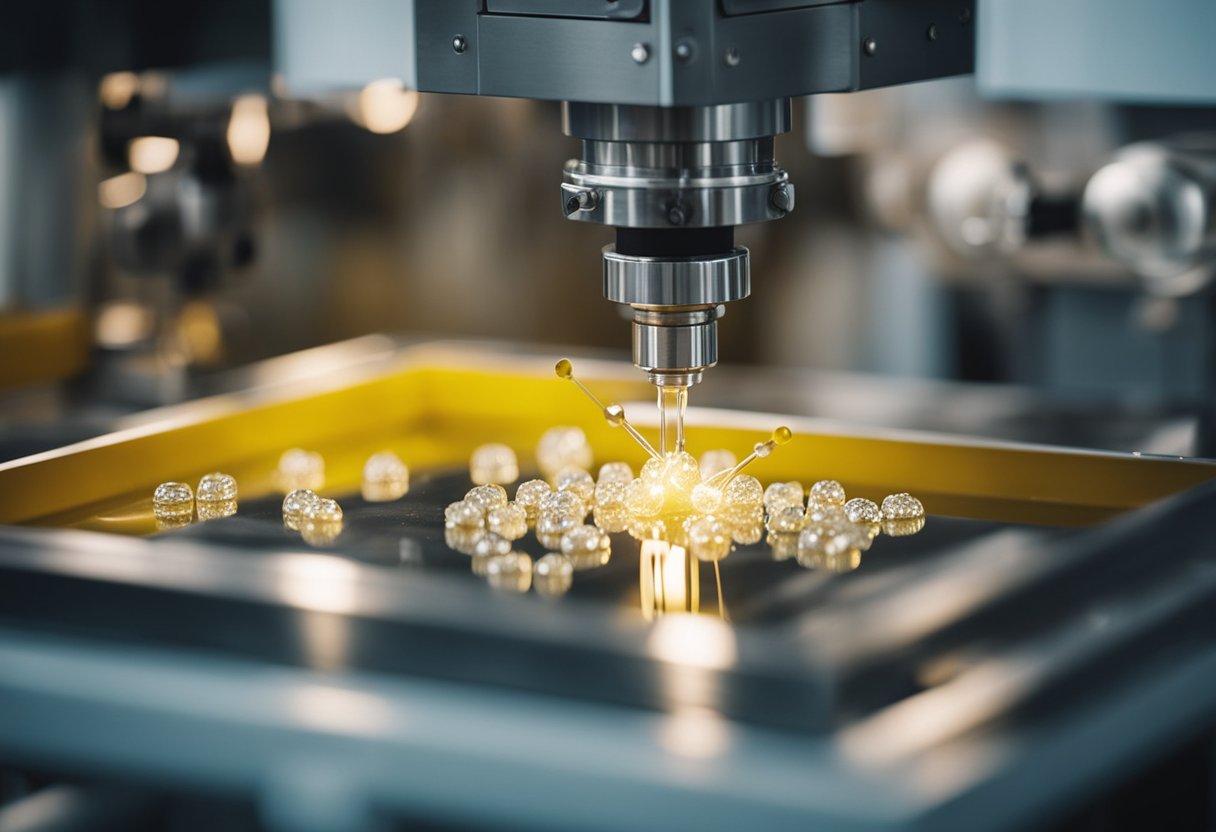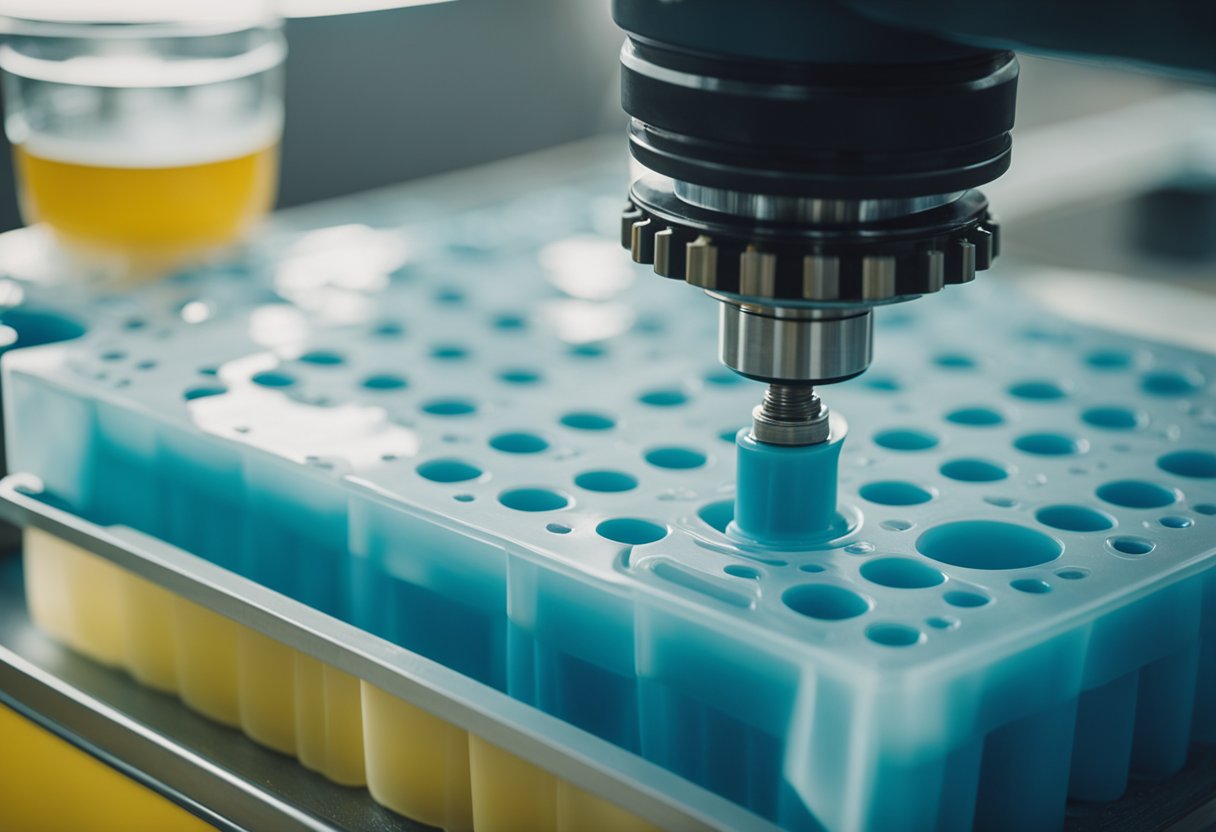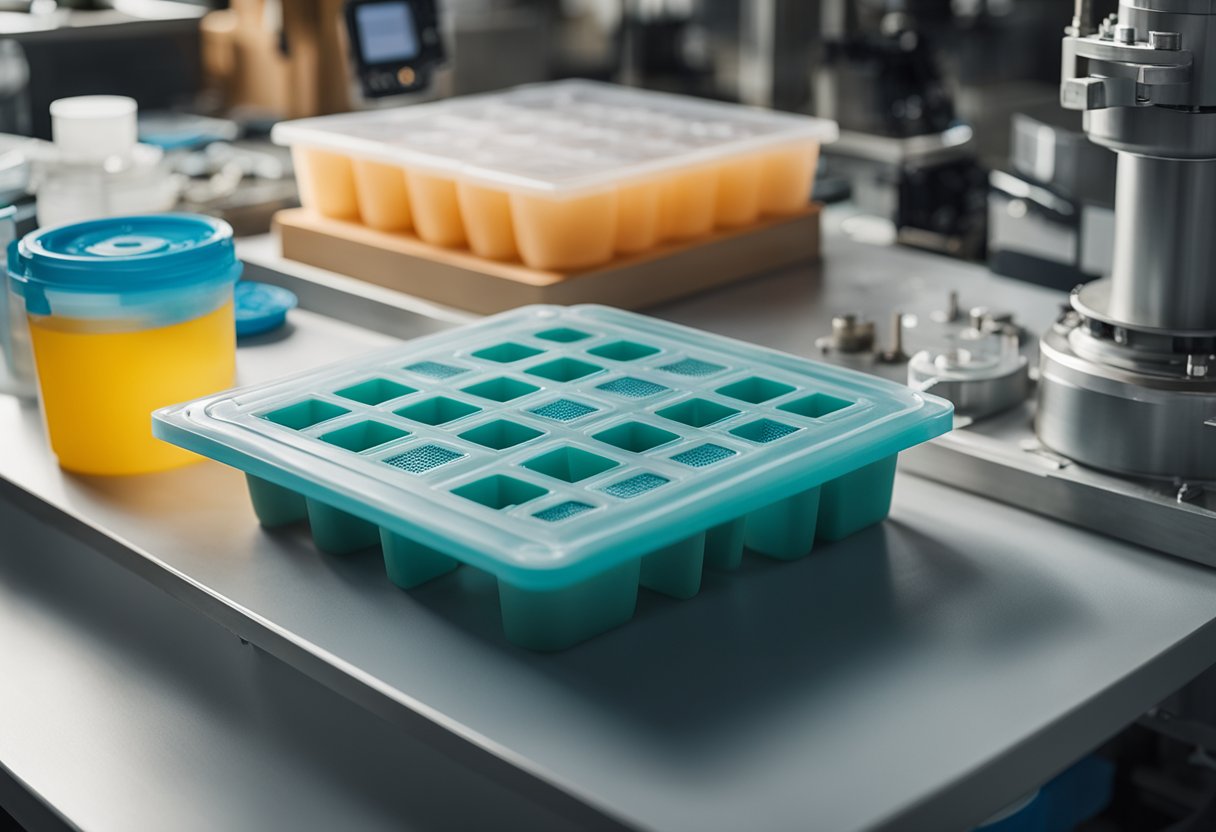If you are in the plastic injection molding industry, you know that molds are the backbone of the manufacturing process. The quality of the molds directly affects the quality of the final product. Silicone molds for plastic injection are becoming increasingly popular due to their versatility and cost-effectiveness. They offer precision and flexibility in creating complex shapes and designs, and can be used for both short and long production runs.

Silicone injection molding is a process that involves injecting liquid silicone into a mold to create a finished product. The process is similar to traditional plastic injection molding but with some key differences. Liquid silicone rubber (LSR) is used instead of traditional plastic resins, which allows for greater precision and accuracy in creating complex shapes and designs. Additionally, silicone molds can be used for a wide range of applications, including medical devices, automotive parts, and consumer products. They are also ideal for creating prototypes and small production runs.
Basics of Silicone Molds for Plastic Injection

If you're looking to create plastic parts with complex shapes, then silicone molds for plastic injection may be the solution you're looking for. Silicone molds are made from liquid silicone rubber, which is injected into a mold and then cured to form a solid mold. This process allows for the creation of intricate shapes and details that are difficult or impossible to achieve with other molding methods.
One of the key advantages of silicone molds for plastic injection is their ability to withstand high temperatures. This makes them ideal for use with high-temperature plastics, such as those used in the automotive and aerospace industries. Silicone molds are also highly durable, with a long lifespan that makes them a cost-effective option for high-volume production runs.
Another benefit of silicone molds is their flexibility. They can be used to create parts with varying thicknesses, from thin-walled components to thick and robust parts. This makes them suitable for a wide range of applications, from small electronic components to large automotive parts.
Silicone molds can be used with a variety of plastic materials, including thermoplastics and thermosetting plastics. They can also be used with a range of molding techniques, including injection molding, compression molding, and transfer molding. This versatility makes them a popular choice for manufacturers looking for a flexible and reliable molding solution.
Overall, silicone molds for plastic injection are a highly effective and versatile molding solution that can help you create complex plastic parts with ease. With their durability, flexibility, and ability to withstand high temperatures, they are a popular choice for manufacturers across a range of industries.
Design Considerations for Silicone Molds

When designing a silicone mold for plastic injection, there are several factors to consider to ensure the final product meets your requirements. In this section, we will explore three key design considerations: Material Selection, Mold Geometry, and Surface Finish.
Material Selection
The selection of the material for your silicone mold is crucial to the success of your plastic injection process. Factors to consider include the type of plastic you will be molding, the expected production volume, and the desired mold life.
Common materials for silicone molds include platinum-cured silicone, tin-cured silicone, and room-temperature vulcanizing (RTV) silicone. Platinum-cured silicone is the most durable and has the longest mold life, making it ideal for high-volume production runs. Tin-cured silicone is less expensive but has a shorter mold life, while RTV silicone is the least expensive but is also the least durable.
Mold Geometry
The geometry of your silicone mold is another critical factor to consider. The mold must be designed to allow for proper flow and cooling of the plastic material. The mold should also be designed to facilitate easy ejection of the finished product.
When designing the mold, it is important to consider the gate location, parting line, and draft angle. The gate location should be placed in a location that allows for proper flow of the plastic material. The parting line should be designed to minimize flash, and the draft angle should be sufficient to allow for easy ejection of the finished product.
Surface Finish
The surface finish of your silicone mold is important to ensure the final product meets your expectations. The surface finish of the mold will be transferred to the finished product, so it should be smooth and free of defects.
When designing the mold, it is important to consider the surface finish of the mold cavity. The mold cavity should be polished to a mirror-like finish to ensure a smooth surface on the finished product. If the mold is not polished correctly, it can result in defects such as sink marks, warping, and surface blemishes.
When designing a silicone mold for plastic injection, it is important to consider the material selection, mold geometry, and surface finish. By taking these factors into account, you can ensure that your final product meets your expectations and is of high quality.
Manufacturing Process of Silicone Molds
Silicone molds are commonly used in plastic injection molding due to their high production volumes and long lifespan. The manufacturing process of silicone molds involves several steps, including mold making techniques, curing, and hardening.
Mold Making Techniques
The first step in the manufacturing process of silicone molds is to create a master mold or pattern. This can be done using a variety of techniques, including 3D printing, CNC machining, or manual carving. Once the master mold is created, liquid silicone rubber is poured into the mold and allowed to cure.
There are two main techniques for creating silicone molds: compression molding and injection molding. Compression molding involves placing a pre-measured amount of silicone rubber into a mold cavity and then compressing it using a hydraulic press. Injection molding, on the other hand, involves injecting liquid silicone rubber into a heated mold cavity under high pressure. Injection molding is often preferred over compression molding due to its higher precision and faster cycle times.
Curing and Hardening
After the silicone rubber is injected into the mold, it is heated to a specific temperature and allowed to cure. The curing process can take several hours to several days, depending on the size and complexity of the mold. Once the silicone rubber has cured, the mold is removed from the heating chamber and allowed to cool.
After the mold has cooled, it is removed from the mold cavity and inspected for defects. Any excess material or flash is trimmed away from the mold, and the mold is then ready for use in the plastic injection molding process.
Overall, the manufacturing process of silicone molds is a complex and precise process that requires a high degree of skill and expertise. By using the appropriate mold making techniques and curing methods, manufacturers can create high-quality silicone molds that are capable of producing large volumes of plastic parts with excellent accuracy and consistency.
Applications of Silicone Molds in Plastic Injection
Silicone molds are widely used in plastic injection molding due to their flexibility, durability, and high precision. In this section, we will discuss the two major applications of silicone molds in plastic injection: prototyping and mass production.
Prototyping
One of the major advantages of using silicone molds in plastic injection is the ability to quickly and cost-effectively produce prototypes. Silicone molds can be easily and quickly fabricated using a master pattern or 3D printed mold. This allows for the production of small quantities of parts for testing and validation before committing to mass production. Additionally, silicone molds can be easily modified or revised to accommodate design changes, making them ideal for the iterative prototyping process.
Mass Production
Silicone molds are also widely used in mass production of plastic parts. The injection molding process using silicone molds is highly efficient and can produce large quantities of parts in a short amount of time. Silicone molds are durable and can withstand the high temperature and pressure of the injection molding process, making them ideal for high-volume production runs. Additionally, silicone molds can be designed to produce complex parts with intricate geometries, making them suitable for a wide range of applications.
In summary, silicone molds are a versatile and reliable tool for plastic injection molding. They are ideal for both prototyping and mass production and offer a range of benefits, including flexibility, durability, and high precision. Whether you are producing small quantities of parts for testing or large volumes for commercial use, silicone molds are an excellent choice for plastic injection molding.
Maintenance and Care for Silicone Molds
Silicone molds are a popular choice for plastic injection molding due to their durability and flexibility. However, to ensure that your silicone mold lasts longer and produces high-quality plastic parts, it is important to perform regular maintenance and care. Here are some tips to help you maintain and care for your silicone molds:
1. Clean the mold regularly
Cleaning your silicone mold regularly is important to remove debris and buildup that can affect the quality of the plastic parts. You can use a soft-bristled brush or a lint-free cloth to clean the mold. Avoid using abrasive materials or harsh chemicals that can damage the mold.
2. Lubricate the mold
Lubricating the mold is important to prevent wear and tear on the moving parts. You can use a silicone-based lubricant to lubricate the mold. Apply the lubricant sparingly to avoid over-lubrication, which can cause the plastic parts to stick to the mold.
3. Inspect the mold for damage
Inspecting the mold regularly is important to identify any damage that can affect the quality of the plastic parts. Look for signs of wear and tear, such as cracks, chips, or scratches. If you notice any damage, repair or replace the mold as soon as possible to avoid further damage to the mold and the plastic parts.
4. Store the mold properly
Storing the mold properly is important to protect it from damage and to ensure that it maintains its shape and quality. Store the mold in a cool and dry place, away from direct sunlight and heat sources. Avoid stacking the molds on top of each other, as this can cause them to deform or become misshapen.
By following these tips, you can ensure that your silicone mold for plastic injection lasts longer and produces high-quality plastic parts. Regular maintenance and care can save you time and money in the long run, as it can prevent costly repairs and replacements.
Advancements in Silicone Mold Technology
Silicone mold technology has come a long way since its inception. With advancements in technology, it has become a highly efficient and cost-effective method for producing plastic parts. Here are some of the recent advancements in silicone mold technology:
1. 3D Printing
3D printing has revolutionized the way molds are made. It has made the process faster, cheaper, and more accurate. With 3D printing, you can create complex molds that were previously impossible to make with traditional methods. It also allows for faster prototyping and testing, which can save time and money in the long run.
2. Automation
Automation has also become increasingly important in silicone mold technology. Automated systems can perform tasks such as part removal, quality control, and material handling, allowing for a more streamlined production process. This can lead to improved production efficiency and reduced costs.
3. Sustainability
Sustainability is an emerging trend in silicone mold technology. With the increasing focus on environmental issues, manufacturers are looking for ways to reduce their carbon footprint. Silicone molds are reusable and can be recycled, reducing waste and saving resources.
4. Material Advancements
Advancements in materials have also improved silicone mold technology. New materials are being developed that are more durable, heat-resistant, and can withstand harsh environments. This allows for the production of parts that can be used in a wider range of applications.
Silicone mold technology has come a long way in recent years. With advancements in 3D printing, automation, sustainability, and materials, it has become a highly efficient and cost-effective method for producing plastic parts.
Frequently Asked Questions
What are the advantages of using silicone molds for plastic injection?
Silicone molds offer several advantages over other mold materials like plaster or wood. They allow for high production volumes and have a long lifespan. Silicone molds are also flexible and can be used to create parts with complex shapes. Additionally, silicone molds are resistant to heat and chemicals, making them ideal for use in manufacturing industries that require exposure to harsh environments.
How does the liquid silicone rubber injection molding process work?
The liquid silicone rubber injection molding process involves pouring the liquid silicone rubber into a master mold or pattern. The mold is then cured to form a silicone mold. The silicone mold is then used to create plastic parts using plastic injection molding. During the injection molding process, molten plastic is injected into the mold cavity, which is then cooled and solidified to form a plastic part.
What factors contribute to the cost of plastic injection molds?
The cost of plastic injection molds is influenced by several factors, including the complexity of the mold design, the size of the mold, the number of cavities in the mold, and the type of plastic material used. The cost of the mold is also affected by the lead time for production, the mold creation costs, and the options for coloring and texturing parts.
Can liquid silicone rubber be used for high-volume plastic injection molding?
Yes, liquid silicone rubber can be used for high-volume plastic injection molding. The liquid silicone rubber injection molding process is highly efficient and can produce high-quality parts quickly. Silicone molds are also highly durable and can withstand repeated use, making them ideal for high-volume manufacturing.
What are the design considerations for a silicone injection mold?
When designing a silicone injection mold, several factors need to be considered. These include the part geometry, the mold materials, the mold size, and the number of cavities in the mold. The mold design should also take into account the type of plastic material to be used, the part quality requirements, and the production volume.
How do DIY silicone molds compare to professional molds in plastic injection?
DIY silicone molds can be a cost-effective solution for small-scale plastic injection molding projects. However, professional molds offer several advantages over DIY molds. Professional molds are typically made from higher quality materials and are designed to withstand repeated use. They also offer greater precision and consistency in part production, resulting in higher quality finished products.





